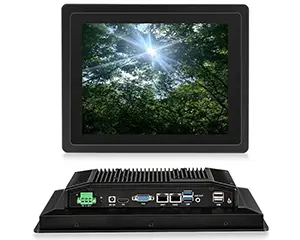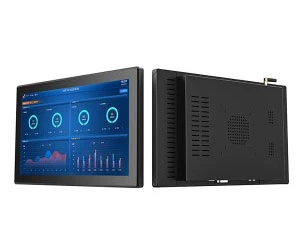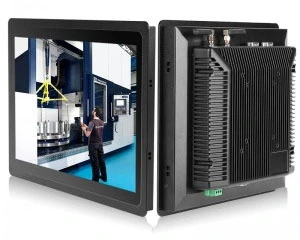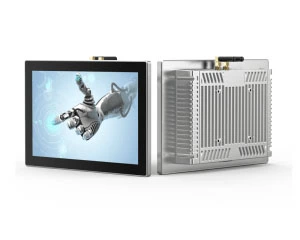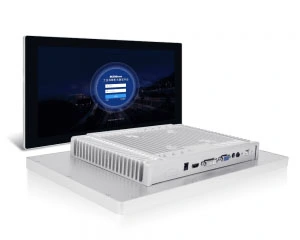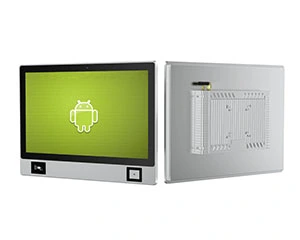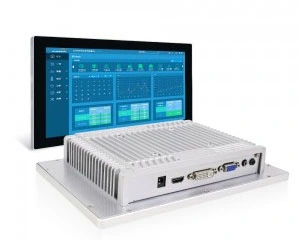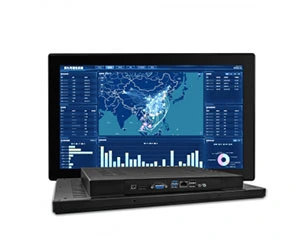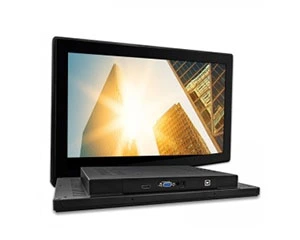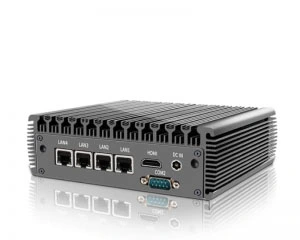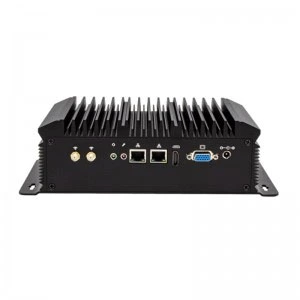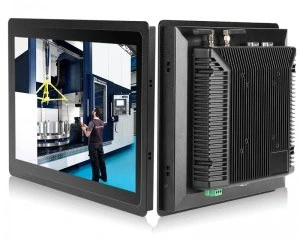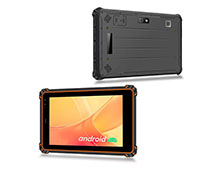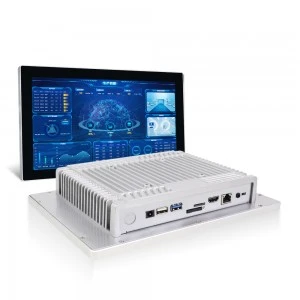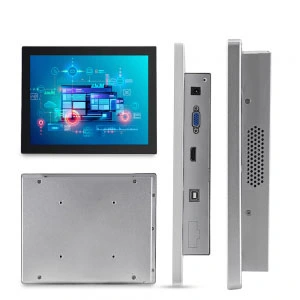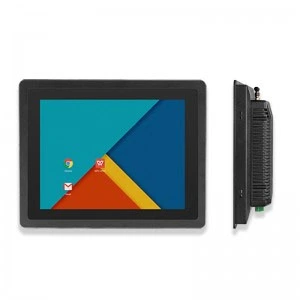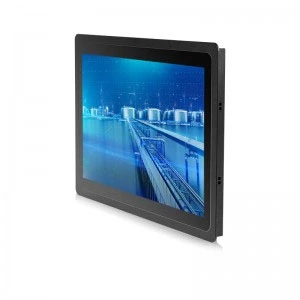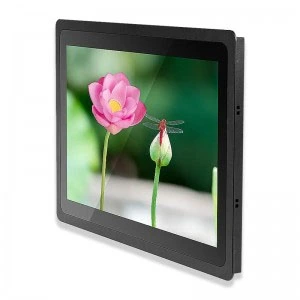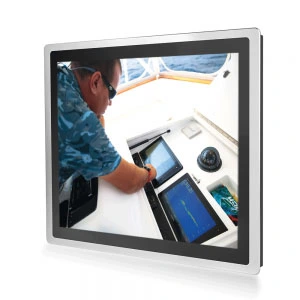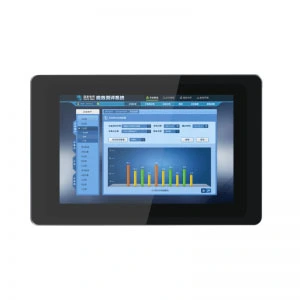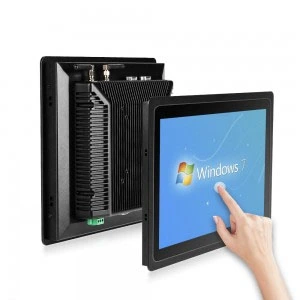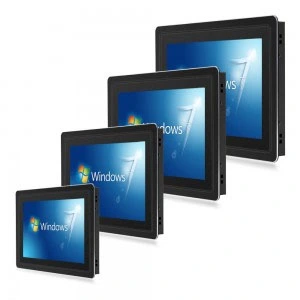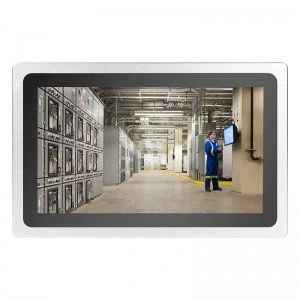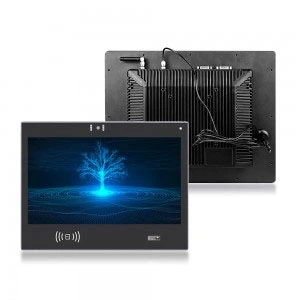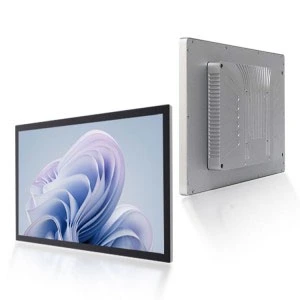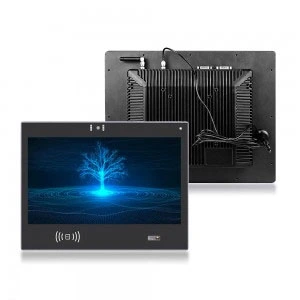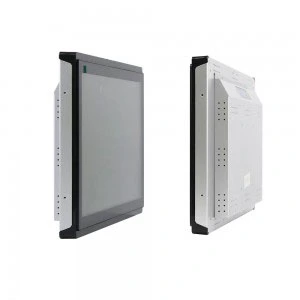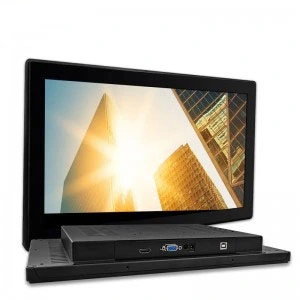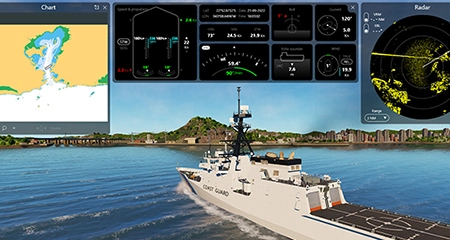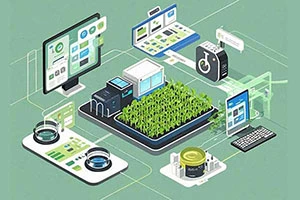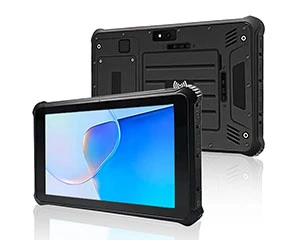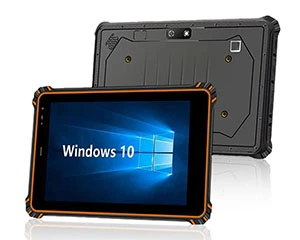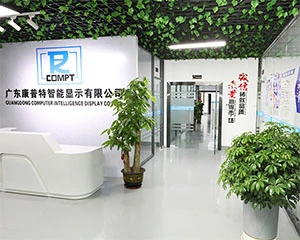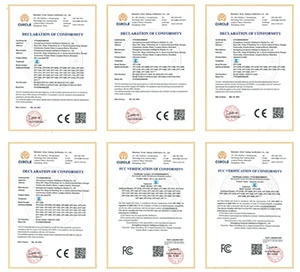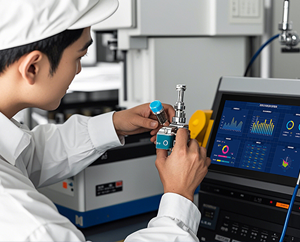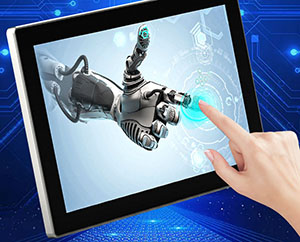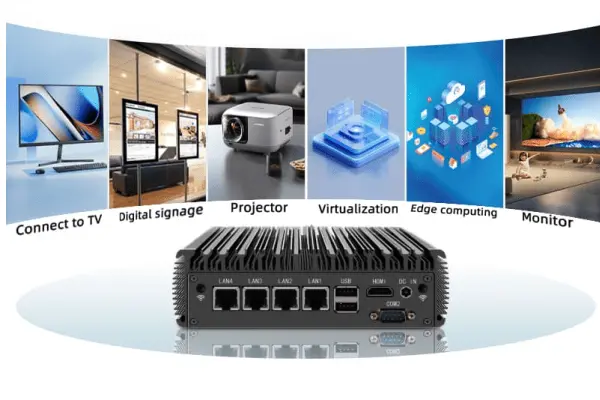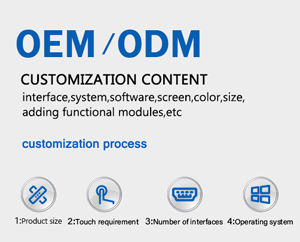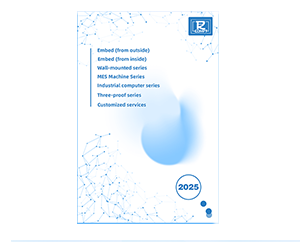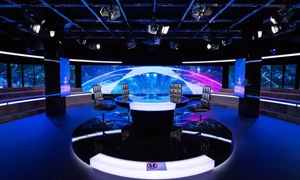Industrial displays are no longer basic monitors, but rather critical components that often control sophisticated factory automation systems or rugged military devices. Unlike regular furnishings crafted for personal use, these commercial screens are built to handle extreme temperatures, excessive vibrations, exposure to water and dust as well as frequency use under rigorous conditions.
Consider the factory where dust is in the air, think of a ship sailing upon choppy waters which sees continuous humidity and salt contact. A typical office monitor would not last very long in such an environment. Enter industrial displays, which are made to be tough, reliable and capable of performing perfectly while a front-of-house display would fail.
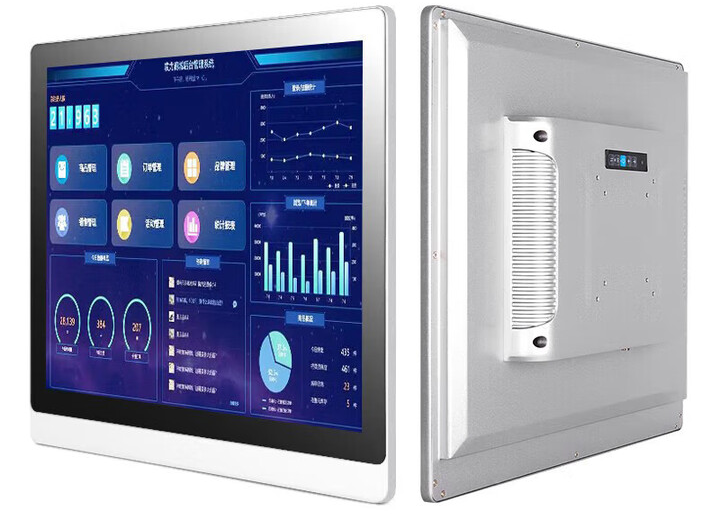
Industrial displays have been increasingly important in recent years. With increasing usage of automation, smart factories and IoT based systems within industries, the demand for ruggedized and touch-enabled monitors is at an all-time high. They are the critical HMI layer between humans and machines for operators, engineers, and management in situations where reliability is a must.
The Evolution of Industrial Displays
Industrial display tech has come a long way. In the 1980s and 1990s, industry used large, fragile CRT monitors of limited capability. They were heavy, power-hungry and incapable of meeting the environmental challenges posed by factories, outdoor work stations or marine vessels.
Flat-panel LCD displays were a game-changer. LCD technology not only cut the weight and power consumption, it also allowed manufacturers to make displays that had higher resolutions, were brighter and tougher. This was the beginning of the actual ruggedized monitor.
The next big leap, touch technology, arrived in 1993. Resistive touch panels were used in early industrial touch displays to enable workers to use screens while wearing gloves or even styli. This was essential in industries that require protective equipment. Then bit by bit capacitive and infrared touch screens passed in precision, multi-touch input and response time and now these industrial touchscreens were much more powerful.
Industrial displays today are smarter, tougher and more flexible than ever before. Contemporary rugged LCD monitors can withstand shocks, violent vibrations, extreme hot and cold, as well as water sprays. Including characteristics such as high brightness monitors for outdoor use and IP65 waterproof rated; these displays are fast becoming an essential part of every industry from oil rigs to military applications.
And with the advance of automation, smart factories and digitalization, industrial displays are not merely an accessory to this but drivers behind human-machine interaction in modern industries.
Key Features of Industrial Display Displays
With that in mind, what distinguishes an industrial display screen from a consumer monitor? Here are the key details:
Rugged Design: Industrial Monitors are Meant to Last. Their reinforcement materials include steel, aluminum, and glass-fiber which block the transmitted shocks, impacts and vibrations to the spindle while also absorb vibration allowing you to work in a less irritating environment.
High Brightness Monitors: Consumer monitors typically peak at 250–300 nits, whereas industrial high brightness monitors can achieve over 1000 nits. This guarantees legibility when viewing outside with natural light is a requirement of outdoor kiosks, transportation hubs, and marine navigation systems.
Touchscreen Technologies: Industrial Touch Monitor Industrial touch monitor has a variety of technology to fit for different circumstance:
-
Resistive touch panels
-
Capacitive touch
-
Infrared touch screens
-
Optical touch panels
Waterproof and Dustproof Protection: Industrial environments are harsh. And many of them feature an IP65 or better rating against dust and water ingress.
Longevity and Reliability: Whereas consumer monitors are engineered for a few years of use, industrial ones are designed to go around the clock every day. Wide temperature range, longer backlight life and long-term availability for continuity of supply are also incorporated into these models to meet the high-performance requirements of new markets.
These attributes have combined to make industrial touchscreen monitors the go-to solution for applications where downtime is simply not an option.
Types of Industrial Display Screens
Industrial displays are not one size fits all. Industries of various kinds have their own types of monitors based on their use cases. Let’s explore the major categories:
1. Rugged LCD Displays
These are the workhorses of industrial settings. Shockproof, vibration-resistant and meant to be used on the factory floor, in a vehicle or in field applications where consumer monitors would die immediately.
2. Industrial Touchscreen Monitors
Coming in multiple sizes, these monitors accommodate several touch technologies and provide great touch experiences. They are widely used as operator panels for industrial process controls.
3. Military-Grade Touchscreen Monitors
Designed to withstand high temperatures, cold and rough handling, the displays are tested according to military standards (MIL-STD). They are essential for defense, aviation and tactical applications.
4. Marine Displays
Marine displays, which are designed for ships and submarines and offshore rigs, are waterproof and salt-resistant as well as sunlight-readable. They are essential to navigation and marine communication systems.
5. Outdoor Touchscreen Monitors
These are ruggedized with a bright, anti-glare coating for ATM kiosks or outdoor signage applications.
6. Open Frame Displays
Unlike monitors these open frame displays are intended for integration into kiosks, ATMs, gaming machines or custom housings. They’re modular and highly flexible.
7. Flat Panel Display Monitors
Flat Panel displays Thin, Space Saving Design for Moderns Industrial Environments where Aesthetics and Technology are Equally Important.
Each of these industrial monitor types plays a different role, so it is important to choose the perfect screen for your application.
Industrial Display Sizes and Formats
Size matters when it comes to industrial display screens. Whether small 8-inch screens or large 21.5 inch monitors are required depends on the segment and use-case.
-
19-Inch Touch Screens
-
21.5-Inch Displays
-
15-Inch HDMI Monitors
-
Small Screens: 12-inch, 10-inch, and 8-Inch Monitors
Selecting the proper display size is not only about what will physically fit in the space, it’s also about making sure operators can interact with the system comfortably and optimally.
Industrial Displays vs Consumer Displays
A consumer-grade monitor looks similar to an industrial display at first sight. Yet when you scratch beneath the surface, the differences are vast.
Build Quality
-
Consumer Displays:Plastic chassis, for office/home use.
-
Industrial monitors: Metal casings, toughness built in, resistant to shocks.
Performance in Harsh Environments
-
Light Industrial displays: Poor temperature range stops at -10°C, not good in a damp and dusty environment.
-
Industrial monitors: Work in frigid cold, make your own evening sun.
Lifespan and Maintenance
-
Consumer displays: usually 3-5 years if you are from usage.
-
Industrial displays: Designed for 24/7 operation to last 7–10 years or more.
Cost Comparison
Yes, industrial screens do cost a bit more. But by the time you factor in downtime, replacements, failures — the way they are used in practice, they often end up being cheaper over the long haul.
That is why, whether it’s automation, marine navigation or defense, turning to consumer-grade monitors for any industry that lives and breathes by a screen just won’t do.
Waterproof and Marine Display Solutions
The ocean is a brutal place for electronics to live. Salt (sea water), humidity, vibration and never-ending sun exposure conspire against consumer based displays. Marine Displays & Waterproof Touchscreen Monitors: Where They Come In This is where marine displays and waterproof monitors come right into the picture.
IP65 Touch Screen Monitors
IP65 monitors are completely dust-proof and resistant to water jets from any angle. They also work well in marine usage since splashes and moist air are ever-present. Operators can rely on these screens not to have exhausted during prolonged journeys.
Marine Touch Screens for Navigation
Navigation systems are a must for any modern ship. Marine Touchscreen Monitors enable sailors and captains to manage their radars, GPS devices, and communication systems with ease. Obviously, sunlight readability is important so that many marine displays are very bright and have anti-glare coatings.
Offshore and Oil Rig Operations
EeeeCPs Oil rigs and offshore platforms require rugged waterproof monitors. Workers rely on them to monitor drilling, issue safety alerts and operate communications systems. Weatherproof and rugged marine-grade LCD displays ensure safe & uninterrupted boat operation in all types of weather conditions, even in a storm.
Outdoor Marine Displays
In addition to ships and rigs, open-air aquatic displays are employed in docks, harbors, coastal installations. They transmit real-time information like weather updates, cargo tracking and communication systems.
Marine monitors are essential pieces of today’s maritime infrastructure and they work entirely trouble-free in some of the toughest environments on the planet.
High Brightness Outdoor Displays
Have you ever attempted to read your phone in the sunlight? It is almost impossible without shielding the screen. The same is true for industrial monitors deployed in outdoor applications. That’s why you are in need of high brightness monitors.
Why Brightness Matters
Brightness is measured in nits. Consumer displays tend to be in the range of 250–350 nits and outdoor industrial displays may run from 1000–2000 nits. This is to allow for information to stay readable even when under direct sunlight.
Anti-Glare and Optical Bonding
High brightness alone isn’t enough. Many industrial outdoor monitors provide anti-glare coating and optical bonding to increase readability by reducing reflectance and strengthening the display.
Applications of Outdoor Displays
-
Kiosks: Ticket machines, vending kiosk and information terminals.
-
Transit hubs: Screens at bus stops, train stations and airports.
-
Retail and signage: Outdoor Advertising and interactive product displays.
-
Construction and mining: Outdoor rugged monitors for Equipment monitoring.
Durability in Harsh Environments
In addition to brightness, the outdoor monitors need to be capable of handling temperature changes, rain, snow and dust. IP65 enclosures and rugged bezels mean they are up to withstanding any kind of weather.
In short, industry wouldn’t be able to do what it does without outdoor touch screens, delivering visibility and usability in the face of sunlight and weather rendering traditional screens all but useless.
How to Select the Best Industrial Display for You
Choosing the right industrial display can be confusing, considering the varying sizes, devices and ruggedness levels available. Here are some of the factors to consider:
Environment of Use
-
Factories: Resistive touch or capacitive touch with rugged shells.
-
Marine: Waterproof, sunlight-readable, salt-resistant.
-
Military: MIL-STD tough monitors with shock protection.
-
Outdoor Kiosks: Sunlight readable, anti-reflective and weather-resistant.
Screen Size and Resolution
Choose the size that suits your workshop and application. For tasks such as people counting, a higher resolution larger monitor may be required. For small setups 10–15 inch screens are perfect.
Touchscreen Technology
-
Resistive: Use with gloves, great for factoriers.
-
Capacitive: Ideal for electronic, sleek user interfaces.
-
Infrared/Optical: Durable and Large Touch Solutions.
Connectivity Options
Search for HDMI, DisplayPort, or legacy connectors based on your current systems. In addition most industrial monitors have USB or RS232 for touch.
Longevity and Vendor Support
Industrial monitors must survive for years, not months. For industries with long product lifecycles, selecting a brand you can trust is vital to ensure long term availability and support.
By examining these considerations closely, you can be confident that your investment in an industrial display pays off with enduring performance.
Top Brands in Industrial Display Screens
When it comes to industrial displays as a lot of this miracle does. A number of companies have become known as leaders in the industry for their creativity and quality.
1. ADLINK Technology
ADLINK provides a complete line of industrial touch screen monitors and panel PCs. They specialize in tough products for manufacturing, transportation and the military.
2. ViewSonic
Well established with consumer monitors, ViewSonic also offers industrial multi-touch displays from 10″ to 27″ and integrated touch screens from 15.6” to 21.5”, utilizing the latest projected capacitive (PCAP) touch technology and are ideal for both indoor and outdoor use.
3. Guangdong Compt
Focused on rugged industrial and embedded computing, Guangdong Compt offers large format displays engineered to pair with industrial PCs and other embedded systems. Their open frame monitors are very suitable for kiosk or automation applications.
4. Other Notable Manufacturers
-
Advantech: Strong in automation and healthcare solutions pupuru Advantech has a strong position in the automation, healthcare as well as IT markets.
-
Winmate: Specializing in rugged and marine-grade monitors.
-
Hope Industrial Systems – The most trusted in industrial touch screens.
These are legacy brands that we know and trust.Of course, they perform and outlast competitive displays to order for many sectors across the globe.
FAQs
What are the differences between industrial and consumer monitors?
Industrial monitors are heavy-duty, long-lasting, and made for rough places; consumer-grade monitors are going to be used in people’s offices and homes.
Are industrial touchscreens waterproof?
Yes, a number of industrial touch-screen monitors also offer IP65 or better protection from dust and water.
What is the life span of industrial display screens?
Industrial displays are rated for 24/7 operation and can be expected to have a life of 7–10 years or more, depending upon use.
Can industrial monitors be customized?
Absolutely. There’s also plenty of choice in just how you can get your display with many suppliers also able to provide custom sizes, bezel design, brightness and touch technology.
Which playfields are most suitable to have a rugged touch monitor in them?
Ruggedized and waterproof displays are of utmost benefit to manufacturing, military, marine, healthcare and transportation.
Conclusion
Industrial displays have evolved from large CRTs to rugged, waterproof and high-brightness touchscreen monitors. They form the foundation of industries from manufacturing and transportation to military, agriculture and healthcare.
The best industrial monitor for your needs is going to be sensitive to parameters such as environment, size, type of touchscreen technology used and connectivity. Companies can rely on durable, efficient and future-ready display solutions from trusted brands such as ADLINK, ViewSonic and OnLogic.
With the development and improvement of technology, industrial displays will be more intelligent, high resolution will appear on them like mobile military computer.Its compatibility will make it able to adapt the style changing from AI;plus it could connect with IoT and edge. But in the end, the force is with us and industrial screens will continue to be at the center of that.

Penny
Web Content Writer
4 years of experience
This article is edited by Penny, the website content writer of COMPT, who has 4 years working experience in the industrial PCs industry and often discusses with colleagues in R&D, marketing and production departments about the professional knowledge and application of industrial controllers, and has a deep understanding of the industry and products.
Please feel free to contact me to discuss more about industrial controllers. sales@gdcompt.com

